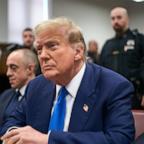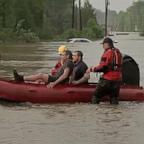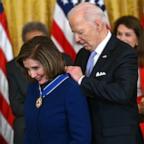What Kyle Busch learned in Kentucky practice can only help
— -- I cannot remember ever being excited by, or looking forward to competing on, a freshly paved mile-and-a-half track. They are, in a word, unpredictable.
Nothing illustrates what I'm about to describe better than the near-disaster Kyle Busch had midway through Friday's practice at Kentucky Speedway. Whistling through Turns 3 and 4, appearing in complete control, his No. 18 car snapped sideways at roughly 175 mph.
It was abrupt. It was without warning. The crew had to be leaning toward unloading the backup car when Kyle made the greatest save I have ever witnessed.
Here is why:
It's not uncommon for drivers to exit a high-speed corner with the right rear tire drifting (sliding toward the wall) -- the tire losing its grip on the race track. Drivers then calculate their distance to the wall and determine simultaneously how much accelerator to maintain as they power off the turn.
What Kyle had was nothing like a drift. He didn't lose 10 or 20 percent of his rear grip. He lost it all!
That he was able to catch the car (with a quick turn to the right) speaks to his reaction time and his exceptional feel in a race car. Even more impressive was the skill he demonstrated in preventing the car from snapping back (overcorrecting to the right, throwing the car into the wall as the weight shifted right to left) and hitting his right front into the outside wall.
Avoiding a snap-back speaks to Busch's knowledge and skill. In other words, 70 percent of today's drivers wouldn't have caught the initial slide. They wouldn't have committed that much steering wheel to the right, knowing that even if they caught the slide to the right, they definitely wouldn't have timed it perfectly when the rear tires regained traction and sprung the other direction. Seventy percent would have surrendered, gassed it and hoped to avoid hitting the outside wall.
Watch Busch release the steering wheel with both hands after capturing the first slide. He allows the car's caster and camber to straighten the steering wheel for him (using the car's balance) because few drivers, if any, could time a transition under such circumstances.
I could spend all day trying to explain why this was the greatest save I have ever seen because of where and when it happened. I can't properly put into perspective how unlikely Busch's outcome was other than to say I couldn't have done it, and 95 percent of those I competed against couldn't either.
It was a brutal slide at a brutal track with brutal circumstances.
The bottom line
Drivers will enter tonight's race knowing Busch's experience could be next for them. It's not the risk in wrestling their race cars that concerns them; it's the risk of not being able to anticipate when that will come.
On a new racing surface, drivers have all their markers, turn-in points and braking points erased.
They will spend the weekend looking for new ones and gradually pushing themselves to find the new limits of Kentucky Speedway, and the limits of their cars at the "new" speedway.
Few drivers identified that limit during practice, but Busch did. He survived it and enters Saturday night's race better for it.
Moments after the incident Friday, Busch keyed his microphone and said, "That came out of nowhere."
Those five words are why drivers seldom look forward to competing on new asphalt.




